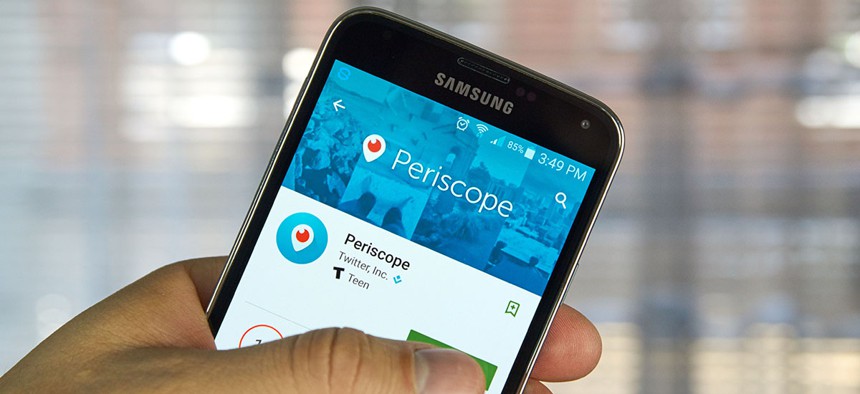How Digital Media Got the Message Out About #NoBillNoBreak

dennizn/Shutterstock.com
The digital media manager for Rep. Scott Peters, D-Calif., said it was imperative to communicate with constituents in California’s 52:nd congressional district, even when C-SPAN’s on-floor cameras turned off.
The extraordinary sit-in by Democrats on the floor of the House of Representatives over gun control last June made international headlines, but were it not for quick-thinking, tech-savvy congressional aides and the Periscope app, barely anybody would have witnessed it live.
Quin La Capra, digital media manager for Rep. Scott Peters, D-Calif., said it was imperative to communicate with constituents in California’s 52:nd congressional district, even when C-SPAN’s on-floor cameras turned off.
So she became a makeshift broadcaster, using her boss’ Twitter account to stream live video of the sit-in through the Periscope app, delivering proceedings to citizens back in northern San Diego and later, across the entire country.
“With the blackout of C-SPAN, the connection to people back home was lost,” said La Capra, speaking Thursday at the Granicus Communications Summit in Washington. “We didn’t know it’d be a groundbreaking moment, but we did know America deserved to know what was going on.”
Congressional leaders, like federal agencies and many government officials—including President Donald Trump—have made the communications pivot from traditional press releases and conferences to digital media, using Twitter, Facebook, Instagram, Snapchat and other applications. These accounts can be wildly popular, with NASA’s Twitter account boasting nearly 23 million followers and 86 million people follow former President Barack Obama’s tweets.
And for good reason. Roughly 80 percent of Americans use Facebook, according to Pew Research Center, and two-thirds of adults use social media daily. Social media accounts generate discussion and allow politicians to develop more nuanced messaging for constituents who follow them back home, and the video apps linked to these accounts create a more personalized conversation for constituents.
Recalling the hectic scene on Capitol Hill that June day, La Capra said Peters asked colleagues to start live-streaming, too. The livestreams of Peters and Rep. Eric Swalwell, D-Calif., combined produced more than 8 million views in a matter of hours, and were picked up by C-SPAN and MSNBC.
While aides rushed to charge mobile devices recording a succession of House Democrats speaking, the video they produced led all the next morning’s news shows and generated countless debate under the #nobillnobreak hashtag.
“When the cameras turned off, Rep. Scott Peters turned his feed on,” La Capra said.
The sit-in turned out to be a groundbreaking moment, La Capra said, in large part because people across the country could actually witness it. Without new technologies and the know-how to use it, they wouldn’t have.
NEXT STORY: Inside NASA's X-Plane Program






